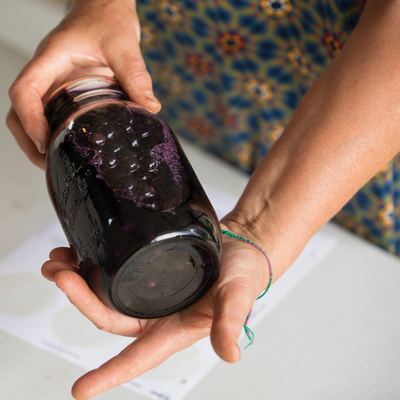Extension’s groundwork in food safety for cottage food producers meant speedy response during COVID-19
In March 2020, Kathy Lange wasn’t sure whether to start the seeds that would fill her half-acre of fruit and veggies that she cans to sell. COVID-19 was turning the world upside down.
“I was wrapped up tight for a while,” says Lange, whose cottage food business is Barefoot Gardens Rochester. “I knew immediately it was going to be a major change. Maybe not so much with how I operate from my home, but from the sales end.”
Lange decided to go ahead and plant the seeds—it offered peace and hope to tend to them. Then she watched the news and stayed connected to the cottage food industry to see if, or how, she’d be able to sell her pickles, sauerkraut, preserves and juices.
The cottage food community
The 2015 cottage food law allows Minnesotans to make and sell certain types of food from their home kitchens, or “cottage,” without a license as long as they register annually with Minnesota Department of Agriculture (MDA) and complete food safety training provided by Extension.
While the cottage food law is still young, there is a strong community of these entrepreneurs. There are 4,100 registered cottage food producers in Minnesota.
A collaboration among the Minnesota Farmers Market Association, Minnesota Cottage Food Producers Association, MDA, and Extension made it possible to assist cottage food producers with developing a required preparedness plan.
Cottage food – a critical sector
Cottage food producers were included as critical sectors and could continue to work during the stay at home order if safety measures were taken. “Cottage food producers have been more than willing and receptive to practices to help keep themselves, their families and their customers safe,” says Kathy Brandt, Extension food safety educator based in Marshall.
Extension’s food safety course for cottage food producers was already available in an online format, and the team rapidly released a section on COVID-19. The same research-based food safety practices that help prevent foodborne illness also help prevent the spread of viruses. These are things like careful handwashing, not working when you or a member of your household is sick, cleaning and sanitizing, and not touching ready-to-eat foods with bare hands.
Creative and safe product distribution
The cottage food law states that the person who makes the food must be the same person who sells and delivers the food to the consumer. Since the law does not allow food to be mailed, cottage food producers got creative in finding ways to physically distance while selling their foods at the farmers market or another location.
“This industry has a one-to-one relationship with their customers,” says Suzanne Driessen, Extension food safety educator based in St. Cloud. “It is about the relationship, but they’ve been able to maintain that with physical distancing. People want their local products.”
Lange has signage and an empty table in front of the farmers market table as a reminder for shoppers to stay at a safe distance. She and her husband sanitize the table, wear masks or face shields, and use hand sanitizer frequently.
Sales skyrocket
For Lange, sales are up by a long shot this season, probably a mix of new and returning customers. “It’s amazing to me when people come back and say they loved our products,” she says.
Brandt and Driessen report new cottage food producers are also coming online.
“Perhaps some who have faced unemployment during this time are taking the opportunity to get started,” says Driessen. “We’re ready to help them.”
Wild for Minnesota’s fruits
Kathy Lange sells a huckleberry jam. “People were hesitant at first to try a different fruit,” she says. “I told them if they didn’t like it, they could get their money back. Instead they came back for more.”
Extension has recipes for jams, jellies, syrups and more for Minnesota’s wild fruits, including:
- Blackberry and huckleberry jam
- Chokecherry jelly
- Gooseberry jam
- Pincherry syrup
Have five minutes?
Watch short Extension food safety videos like “Preserve your catch,” “Dry it, you’ll like it,” and “What’s wrong with this canning recipe.
Permission is granted to news media to republish our news articles with credit to University of Minnesota Extension. Images also may be republished; please check for specific photographer credits or limited use restrictions in the photo title.





